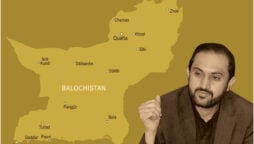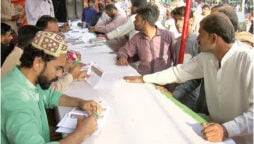
Perils of Disconnectivity
Regions of South Asia-Central Asia continue to lag behind other regions in terms of inter-connectedness
The end of the Cold War led to an era of globalization. The buzz word of these past three decades has been connectivity. A hallmark of this process has been the rise of regions and the sub-regions providing increased connectivity of infra-structure, trade, transport and transit frameworks and energy supplies. Regional trade and economic diplomacy took the front seat in statecraft and governance.
Resultantly, over the past half century or so the European Union (EU) consolidated itself as a formidable bloc in trade and financial transactions. Association of SouthEast Asian Nations (ASEAN) emerged as another well-connected region despite diversity and disputes among the member states. Both North and South Americas are benefitting from flourishing regional trade. In the Middle East, Dubai, Doha and Bahrain have emerged as leading business centers. Saudi Arabia has recently adopted business proactive policies to make for the lost ground in the past few decades.
However, despite these globally prevalent trends, South Asia and Central Asia are two distinct regions which have continued to defy connectivity within them as well as between them. The reasons behind this phenomenon are (a) perpetual instability for the past few decades in Afghanistan, which is regarded as a hub or a pivot for much-needed economic integration, and (b) isolationist and bureaucratic approaches seriously influenced by bilateral disputes and inability to address these disputes through rational approaches.
South Asia, host to over 1.5 billion people which is almost a quarter of the total world population, is insignificant when assessed in terms of percentage of the GDP of the entire world. With another over one billion Chinese people in the vicinity, the potential for regional trade and transit is immense but remains unrealized and there are no realistic projections for a positive change in this pattern, at least in the short term. According to the latest South Asia Economic Focus of the World Bank, the growth in 2022 in this region Asia would fall to 5.8 per cent from 7.8 per cent aggregate achieved in 2021 due to the effects of the Ukrainian and Sri Lankan crises and lingering shocks of depressed growth because of COVID-19. Economists suggest even this figure is misleading because of much the higher growth recorded by a dominant Indian economy, benefitting from the vast reserve of its foreign exchange.
Central Asian countries, though much lesser in population, are quite rich in mineral and energy resources. The economic strength of Central Asia since preistoric times has been its location, which is at the cross-roads of populous South Asia on the one hand and affluent Caucus and Eurasian regions on the other hand. Unfortunately, for the past over a century now this region has remained embroiled in ideological confrontations, super-power rivalries and bilateral disputes preventing any meaningful economic interaction. The advent of the Afghan conflict since the 1970s has made things only worse. According to the reliable World Bank projections, Central Asia as a region is also likely to grow at just 4.3 per cent in 2022, a much lower figure than its potential.
Free trade is the most important barometer of economic interaction between the two countries. The regions which have grown economically, the countries have particularly worked on promoting trade with their neighbours. Interestingly, trade patterns in South Asia indicate that states have continued to register much higher trades with far-off countries in Europe and Americas than trade with their immediate neighbours. The two biggest countries of South Asia — India and Pakistan — have not been able to show any political will to promote bilateral trade. In fact, since 2019 after India’s unilateral actions in Indian Occupied Jammu and Kashmir, the formal trade between the two countries has become non-existent or is taking place through indirect channels.
The trade and economic relations between the countries of Central Asia also remain far from ideal. Most of these countries have small populations and economies. Their state bureaucracies are strong and despite diversifying their relations with the West, these countries are deeply influenced by Russian decisions and are still widely considered its backyard. However, in recent years the Central Asian countries such as Kazakhstan, Uzbekistan, Turkmenistan and Kyrgyzstan are showing both will and compulsion for improving connectivity of their economies. One evidence is the increasing share of these countries’ trade in Afghanistan and their urge for participation in various projects linking South Asia through Afghanistan.
Transit and transportation corridors through Afghanistan, Iran and Central Asia provide a huge opportunity for changing the economic destiny of the region. In an age of modern communication, Afghanistan remains practically disconnected by railways due to which intra-regional transport and transit is in a primitive shape and the potential of Afghanistan’s oft-talked about mineral resources cannot be translated into economic benefits for its people. In recent years, Uzbekistan, Turkmenistan and Iran have built and are in the process of expanding railway links with Afghanistan’s northern and western towns of Hairatan and Herat. On Afghanistan’s southern border Pakistan unfortunately has been left behind in making any tangible progress for enhancing connectivity with Afghanistan, and even other neighbours.
Facilitative regional transit trade frameworks are vital for realizing the trade and transport potential of the region. Both Central Asia and Afghanistan being landlocked, the existing transit arrangements are inadequate and prohibitive. Pakistan and Afghanistan have not been able to work out and implement an efficient Afghanistan-Pakistan Transit Trade Agreement (APTTA), meeting the needs of the contemporary times due to both political and technical reasons as well as corruption prevalent at border crossing points. Afghanistan’s transit with bordering Central Asian countries — Uzbekistan, Tajikistan and Turkmenistan and Iran — is also faced with serious issues. Trilateral or quadrilateral transit agreements can be a solution for instituting an efficient regional transit trade framework but the countries involved have not yet shown any commitment towards alleviating the hurdles and prioritizing economic issues over the political and security dominated considerations.
The Central Asia has vast energy reserves in gas and electricity generation which can meet the domestic and industrial needs of populated South Asia. It’s astonishing that a number of mega projects such as Turkmenistan Afghanistan Pakistan India (TAPI) gas pipeline, CASA-1000 and Turkmenistan-Afghanistan-Pakistan (TAP) electricity transmission are only mentioned in the statements of the leaders of these countries at regional and international summits with no hint of any progress on ground for now more than two decades. Innovatively, even if TAPI is not going ahead, Pakistan can explore a gas pipeline from Turkmenistan through Afghanistan provided the Afghan interim government ensures security arrangements.
To sum up, in an age and era where forces of economy fully come into play when conducive arrangements are available for connectivity of people, goods, capital and information. While other regions of the world in the past few decades have worked to gradually enhance their inter-connectedness, the regions of South Asia-Central Asia continue to tread on the perils of disconnectivity.
The writer is a former ambassador of Pakistan to Afghanistan
Catch all the National Nerve News, Breaking News Event and Latest News Updates on The BOL News
Download The BOL News App to get the Daily News Update & Live News.












 Read the complete story text.
Read the complete story text. Listen to audio of the story.
Listen to audio of the story.